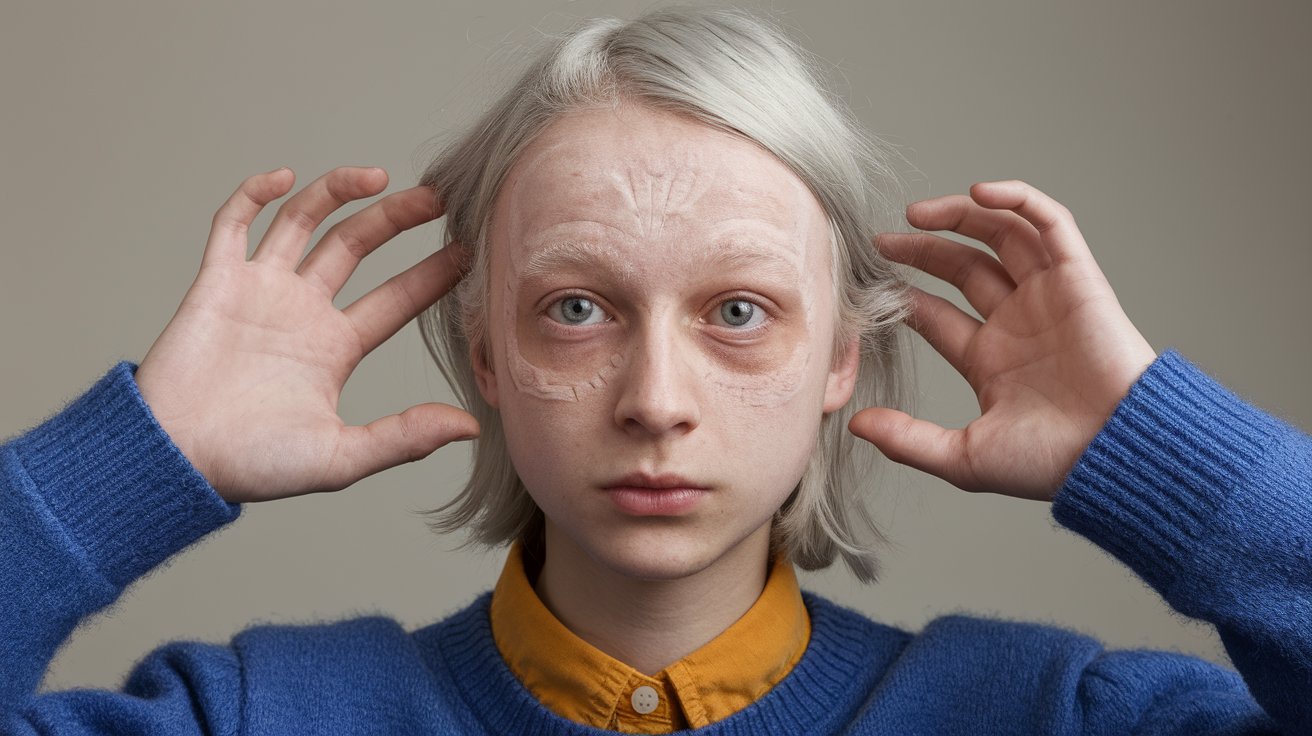
What is Oculocerebral Hypopigmentation Type Preus? This rare genetic condition affects both the eyes and brain, leading to reduced pigmentation in these areas. Individuals with this disorder often experience vision problems due to the lack of pigment in the retina, which is crucial for normal vision. Additionally, neurological issues may arise, impacting cognitive and motor functions. The condition is inherited in an autosomal recessive pattern, meaning both parents must carry the gene for a child to be affected. While there is no cure, early diagnosis and supportive therapies can help manage symptoms and improve quality of life. Understanding this condition is vital for those affected and their families, as it can guide treatment and support strategies.
Key Takeaways:
- Oculocerebral Hypopigmentation Type Preus is a rare genetic condition affecting pigmentation and neurological functions, leading to vision issues, developmental delays, and skin sensitivity. Early diagnosis and management strategies can improve quality of life.
- Research on Oculocerebral Hypopigmentation Type Preus focuses on understanding its genetic basis, exploring potential treatments like gene therapy, and conducting clinical trials to manage neurological and pigmentation issues. Collaboration and awareness campaigns are crucial for progress.
What is Oculocerebral Hypopigmentation Type Preus?
Oculocerebral Hypopigmentation Type Preus is a rare genetic condition. It affects pigmentation in the eyes and brain, leading to distinct physical and neurological characteristics. Understanding this condition can help in recognizing its symptoms and managing its effects.
-
Genetic Origin: This condition is inherited in an autosomal recessive manner. Both parents must carry the gene for a child to be affected.
-
Pigmentation Issues: Individuals often have lighter skin, hair, and eye color due to reduced melanin production.
-
Vision Problems: Commonly, those affected experience vision issues like nystagmus, where the eyes make repetitive, uncontrolled movements.
-
Neurological Impact: The condition can lead to developmental delays and intellectual disabilities, affecting learning and cognitive functions.
-
Rare Occurrence: It is extremely rare, with only a few documented cases worldwide, making research and awareness crucial.
How Does It Affect the Body?
The condition impacts various systems in the body, primarily focusing on pigmentation and neurological functions. These effects can vary in severity among individuals.
-
Eye Abnormalities: Apart from nystagmus, individuals may have strabismus, where the eyes do not properly align with each other.
-
Hearing Loss: Some individuals may experience partial or complete hearing loss, adding to communication challenges.
-
Skin Sensitivity: Due to lighter skin, there is increased sensitivity to sunlight, requiring protective measures.
-
Motor Skills: Fine and gross motor skills might be delayed, impacting activities like walking or grasping objects.
-
Seizures: In some cases, seizures may occur, necessitating medical intervention and monitoring.
What Are the Diagnostic Methods?
Diagnosing this condition involves a combination of genetic testing and clinical evaluation. Early diagnosis can aid in managing symptoms effectively.
-
Genetic Testing: Identifying mutations in specific genes helps confirm the diagnosis.
-
Ophthalmologic Examination: Eye exams can detect abnormalities in vision and eye movement.
-
Neurological Assessment: Evaluating developmental milestones and cognitive abilities provides insight into neurological impact.
-
Audiological Testing: Hearing tests determine the extent of hearing loss, if present.
-
Skin Examination: Dermatological assessments check for pigmentation issues and sensitivity.
What Are the Management Strategies?
While there is no cure, various strategies can help manage symptoms and improve quality of life for those affected.
-
Vision Therapy: Specialized exercises and therapies can help improve eye coordination and vision.
-
Hearing Aids: For those with hearing loss, aids can enhance communication abilities.
-
Physical Therapy: Helps in developing motor skills and improving muscle strength and coordination.
-
Educational Support: Tailored educational plans assist in addressing learning challenges and promoting development.
-
Sun Protection: Using sunscreen and protective clothing minimizes skin damage from UV exposure.
What Research is Being Conducted?
Ongoing research aims to better understand the genetic basis and potential treatments for this condition. Collaboration among scientists and medical professionals is key.
-
Gene Therapy: Exploring the potential of correcting genetic mutations to alleviate symptoms.
-
Clinical Trials: Testing new medications and therapies to manage neurological and pigmentation issues.
-
Patient Registries: Collecting data from affected individuals to improve understanding and treatment approaches.
-
International Collaboration: Researchers worldwide are working together to share findings and advance knowledge.
-
Awareness Campaigns: Efforts to increase awareness among healthcare providers and the public to ensure early diagnosis and intervention.
Final Thoughts on Oculocerebral Hypopigmentation Type Preus
Oculocerebral Hypopigmentation Type Preus, a rare genetic disorder, affects both the eyes and brain. It’s characterized by hypopigmentation, which means less color in the skin, hair, and eyes. This condition can lead to vision problems and neurological issues. Understanding its genetic basis is crucial for early diagnosis and management. Genetic counseling can be beneficial for families affected by this disorder, helping them understand the risks and implications. While there’s no cure, supportive therapies can improve quality of life. Research continues to explore potential treatments and interventions. Raising awareness about this condition can lead to better support and resources for those affected. If you or someone you know is dealing with this disorder, seeking advice from healthcare professionals is vital. Knowledge is power, and staying informed can make a significant difference in managing this condition.
Frequently Asked Questions
Was this page helpful?
Our commitment to delivering trustworthy and engaging content is at the heart of what we do. Each fact on our site is contributed by real users like you, bringing a wealth of diverse insights and information. To ensure the highest standards of accuracy and reliability, our dedicated editors meticulously review each submission. This process guarantees that the facts we share are not only fascinating but also credible. Trust in our commitment to quality and authenticity as you explore and learn with us.
